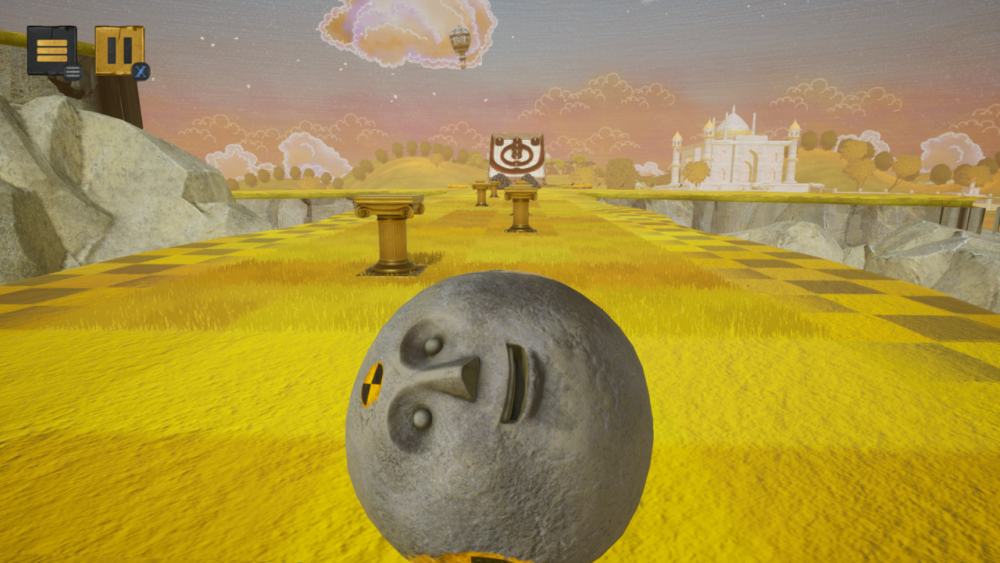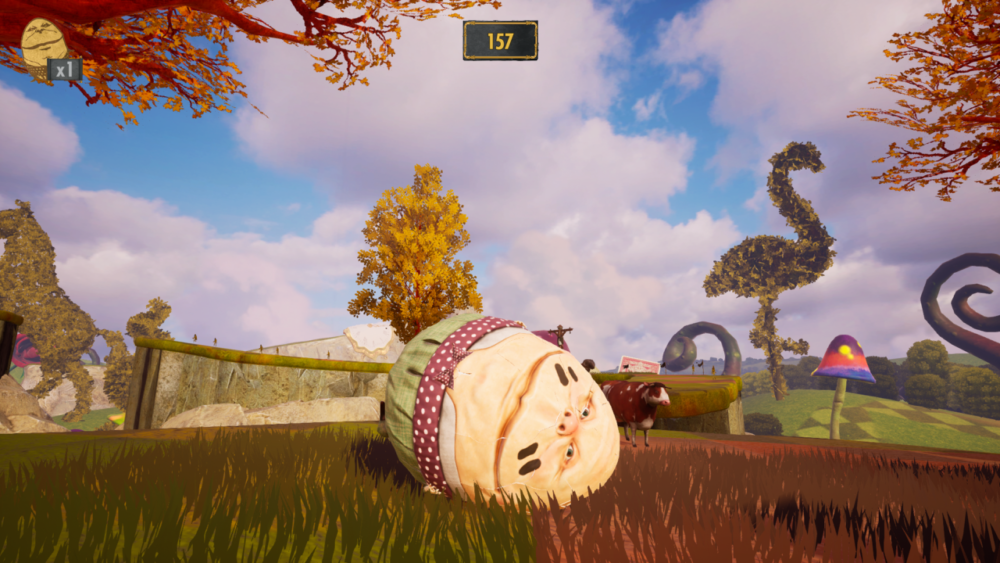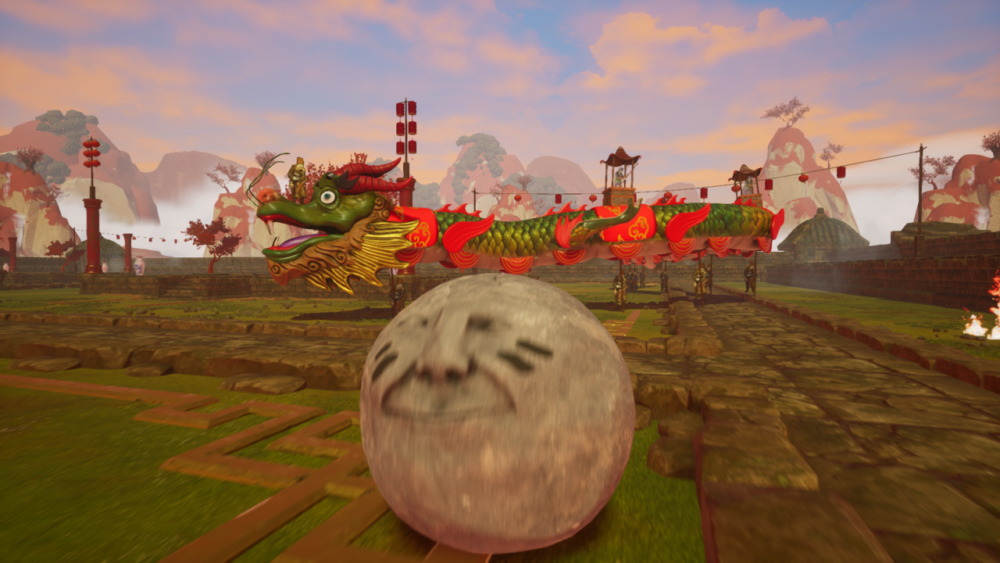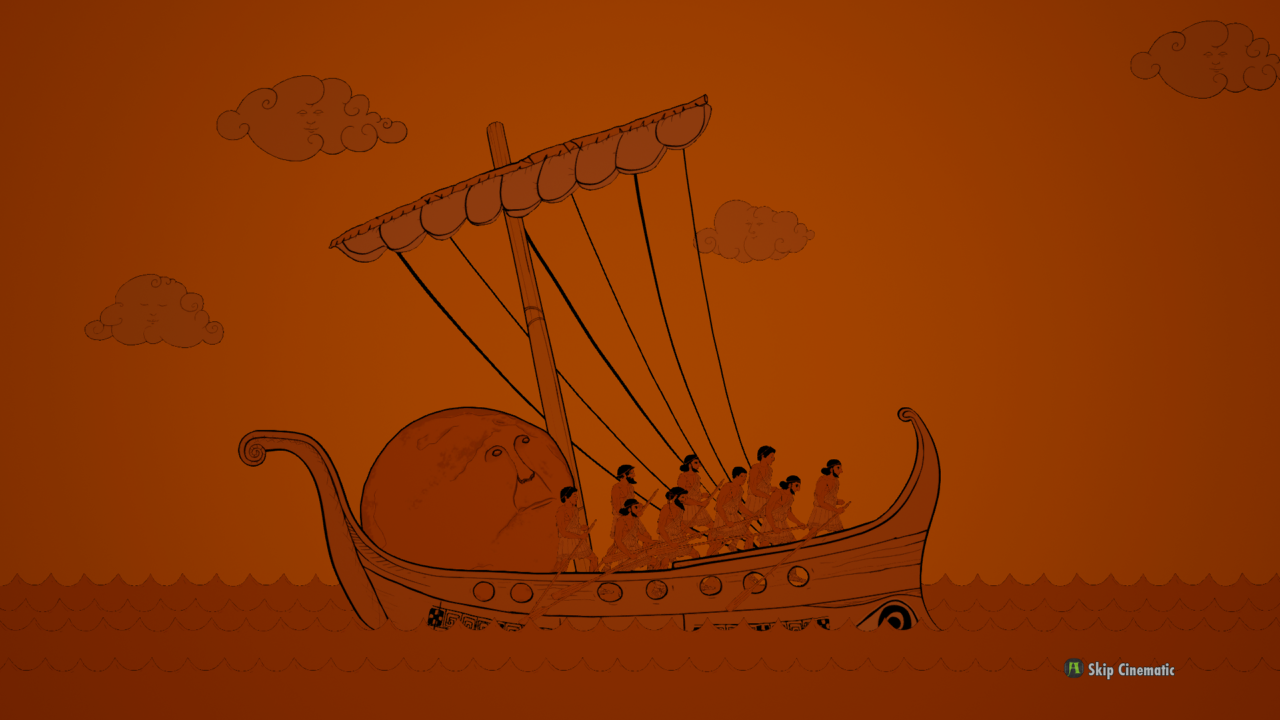History’s greatest rock and roll trilogy is finally complete with Rock of Ages 3: Make & Break. It all began when Sisyphus finally got fed up with his eternal punishment, letting his boulder roll downhill to take revenge on the gods. Then Atlas snapped, taking the globe off his back to roll it over his enemies. Now, a new mythological hero approaches… Elpenor. Um, you know, that young guy traveling with Odysseus in Homer’s Odyssey. The one whose closest relation to a boulder was being being trapped behind one in the cyclops’ cave. Um… huh? Mythology isn’t rife with significant figures rolling rocks, yet somehow this still feels like a huge stretch.

Here’s what I liked:
Passing the chisel – The sequel’s biggest addition is the new level editor (so big it’s actually the first option on the menu), and it’s very much worth its place in the title. It’s a robust tool allowing you to build maps for any game mode in a multitude of art styles, allowing you to make a level indistinguishable from the developer-made content. I’m not much of a level builder myself, so I was impressed by just how easily I was able to draw out a smooth course, throw on some obstacles and test it out. Once your course is complete you can easily upload it to share with the rest of the world. The library of community levels is accessed through the “Break” section, with an extensive catalog that makes it easy to search for what you like, and play new levels to your heart’s content.
Throwing stones – If you’re looking for a more traditional Rock of Ages experience, there is, as always, a brand new campaign to play through complete with the series’ signature Monty Python-esque cutscenes. The fundamentals are unchanged: you need to roll your boulder through a course to break into your enemy’s castle while your AI enemy does the same to your castle. It’ll take a few turns to break through the gate, so between rolls you’ll get to add obstacles to your enemy’s path to slow them down and limit their ramming power. This time around, the story leans harder into variety; besides barreling through more time periods than ever, you’re going to be doing a lot more than the traditional war game type. Some levels are pure obstacle courses; some are tower defense challenges; and there’s even some skeeball for good measure. These levels are shorter and put more emphasis on specific gameplay mechanics, which make them interesting distractions outside of the longer battles.

Here’s what I didn’t like:
Stars in the sky – While the campaign succeeds in variety, it fails in most other aspects. For starters, the overarching structure is a mess. Instead of a linear progression of levels, you go back and forth through a timeline of distinct historical periods. Each consists of a central war and satellite activities, and unlocking further periods requires earning stars within these levels. Completing a level earns you a star, but most have additional objectives to earn extra. The balancing here is strange. Completing a war will only net you two stars – maximum – while shorter activities like time trials can get you three. Furthermore, the boss battles are the most unique content in the game yet give you nothing on completion. The game weirdly downplays the aspects that once gave the series its identity only to make room for less unique game types.
A great fall – Even without the more series-defining content, the other challenges should still offer fun marble-rolling goodness but it never picks up momentum. I don’t know if it’s due to technical issues or just a lack of polish, but it always felt like the game was working against me. Random parts of the track stopping me dead, the camera facing the wrong way when respawning, the castle door throwing me airborne to miss the finish line – there are a lot of little things that go wrong, which really stinks when you’re working against the clock or an AI opponent. There’s only one challenge type that, even without bugs, I think would be legitimately bad: the Wonderland levels. These are pure obstacle courses, where instead of a rock you roll an egg and have three lives instead of a heath bar. These are easily the hardest course layouts in the game, and that’s before considering the how awkward it is to control the oblong egg (even with it’s double-jump). The life system is also poorly implemented; you can fall off cliffs and respawn without issue, only to shatter when you’re gently dropped back on the course. With no health bar it’s extremely unclear what it actually takes to kill you, which only makes the experience more frustrating.

Wrap-up:
Rock of Ages 3: Make & Break may have worked better as an add-on for the previous title. It has a great level editor and sharing features which, paired with the numerous multiplayer modes, makes for limitless potential. The core campaign feels tacked-on in comparison, like a large batch of basic, user-created levels rather than something professionally crafted. This entry gives the impression of being more about quantity than quality, but at least the core gameplay is familiar and can still be fun.
Score: Reader’s Choice
Rock of Ages 3: Make & Break was developed by Giant Monkey Robot and Ace Team and published by Modus Team. It was released on July 21, 2020 for $29.99. A copy was provided for review purposes.


